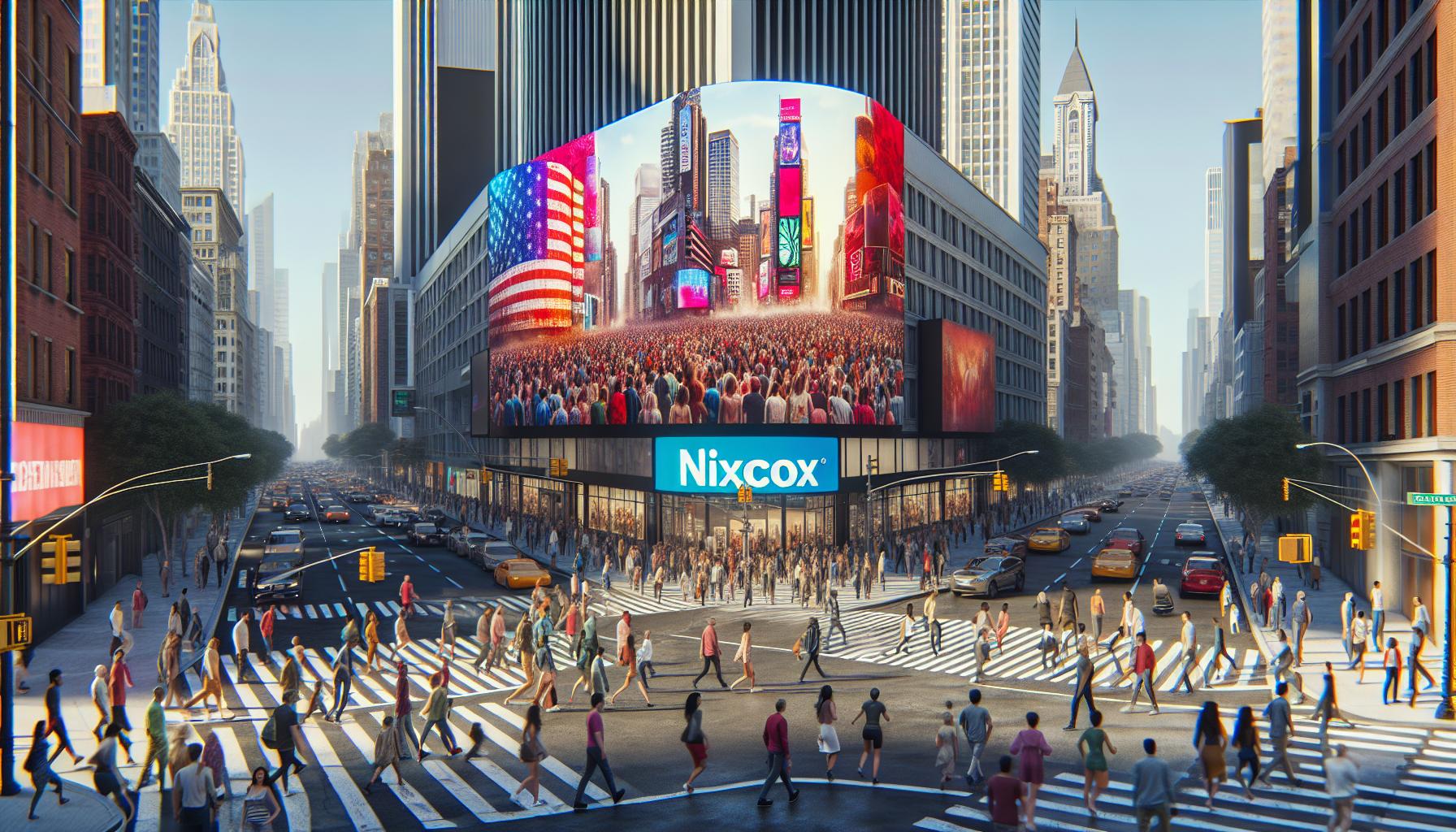The Best Fluffy Pancakes recipe you will fall in love with. Full of tips and tricks to help you make the best pancakes.
Out-of-home marketing stands as one of advertising’s most effective tools capturing consumer attention in an increasingly digital world. From towering billboards to transit displays and street furniture this traditional form of advertising continues to evolve and deliver impressive results for brands seeking to make a lasting impact.
In today’s hyper-connected environment where consumers are bombarded with online ads out-of-home marketing offers a refreshing way to break through the digital clutter. It’s ability to reach audiences during their daily routines combined with advances in digital technology has transformed static displays into dynamic interactive experiences. Modern OOH campaigns now seamlessly integrate with mobile devices social media and location-based marketing creating powerful multichannel experiences that drive engagement and brand awareness.
What Is Out Of Home Marketing?
Out of home (OOH) marketing encompasses advertising that reaches consumers while they’re outside their homes. This marketing strategy targets audiences in public spaces through various physical and digital advertising formats.
Types Of Out Of Home Advertising
Out of home advertising includes multiple formats across different environments:
- Street Furniture: Bus shelters, benches, kiosks, phone booths
- Transit Media: Bus wraps, taxi tops, subway station displays, airport advertising
- Billboards: Highway bulletins, urban panels, digital displays
- Place-Based Media: Mall displays, stadium screens, gym advertising, cinema pre-rolls
- Point of Sale: Store window displays, retail entrance advertising, shopping cart ads
- Alternative Media: Aerial banners, guerrilla marketing installations, mobile billboards
Traditional vs Digital OOH Marketing
Traditional OOH and Digital OOH (DOOH) differ in several key aspects:
- Static printed displays
- Fixed content for extended periods
- One-time production costs
- Limited to single message display
- Manual installation process
- Dynamic electronic displays
- Real-time content updates
- Programmatic advertising capabilities
- Multiple message rotations
- Weather-triggered content changes
- Interactive features with mobile integration
- Audience measurement analytics
| Feature | Traditional OOH | Digital OOH |
|---|---|---|
| Update Frequency | 2-8 weeks | Real-time |
| Content Flexibility | Static | Dynamic |
| Installation Cost | Higher initial | Lower initial |
| Operating Cost | Lower | Higher |
| Analytics Capability | Limited | Advanced |
Key Benefits Of OOH Advertising

Out-of-home advertising delivers measurable advantages for brands seeking to maximize their marketing impact. These benefits stem from OOH’s unique ability to capture attention in public spaces through strategic placement and visual elements.
Wide Audience Reach
OOH advertising reaches 90% of U.S. residents aged 16 and older each month. Strategic placement in high-traffic locations, such as highways, shopping centers or transit stations, creates multiple impression opportunities throughout the day. The broad exposure includes diverse demographic groups across various income levels, age ranges and cultural backgrounds who encounter these advertisements during their daily routines.
| Audience Reach Metrics | Percentage/Number |
|---|---|
| Monthly reach (US residents 16+) | 90% |
| Weekly impressions in major cities | 10-15 million |
| Average daily exposure time | 20-30 minutes |
High Impact Visual Appeal
OOH advertisements command attention through large-format displays and striking visual elements. Digital billboards display high-resolution images at 400-700 nits brightness during daylight hours and 200-300 nits at night for optimal visibility. The combination of size, placement and visual clarity creates memorable brand experiences that generate 82% recall rates among viewers.
| Visual Impact Metrics | Performance |
|---|---|
| Viewer recall rate | 82% |
| Average viewing time | 5-7 seconds |
| Brand recognition increase | 40-55% |
Best Practices For OOH Campaign Success
Out-of-home marketing campaigns require strategic planning and precise execution to maximize impact and ROI. Successful OOH campaigns integrate multiple elements to create memorable brand experiences.
Strategic Location Selection
Strategic location selection centers on placing OOH advertisements in high-traffic areas with optimal visibility and audience engagement potential. Marketing professionals analyze three key location factors:
- Traffic Volume: Areas with 50,000+ daily impressions provide maximum exposure
- Viewing Time: Locations with 8-10 seconds of viewing opportunity enhance message retention
- Target Demographics: Placement in zones where the target audience spends 3+ hours daily
- Competitive Environment: Spaces with less than 3 competing advertisements within 500 feet
- Viewing Distance: Optimal placement at 200-350 feet from primary viewing angles
- Text Content: Limited to 7 words or less for 5-second readability
- Font Size: Minimum 1-inch letter height per 10 feet of viewing distance
- Color Contrast: 70% contrast ratio between text and background
- Visual Hierarchy: 3 or fewer design elements arranged by importance
- Brand Elements: Logo placement in the bottom 20% of the display space
- Image Quality: Minimum 300 DPI resolution for large-format printing
- White Space: 30-40% empty space ratio for visual clarity
| Design Element | Recommended Specification | Impact on Visibility |
|---|---|---|
| Text Length | 7 words maximum | +82% readability |
| Color Contrast | 70% ratio | +64% recognition |
| Visual Elements | 3 or fewer | +55% recall rate |
Measuring OOH Campaign Performance
OOH campaign measurement combines traditional metrics with advanced digital analytics to evaluate advertising effectiveness. Modern tracking technologies provide detailed insights into audience engagement and campaign impact across various formats.
Key Metrics And Analytics
OOH measurement systems track essential performance indicators to quantify campaign success:
Audience Metrics:
- Daily Effective Circulation (DEC): Number of people passing an OOH display in 24 hours
- Opportunity to Contact (OTC): Total audience exposed to the advertisement
- Gross Rating Points (GRP): Percentage of target audience reached multiplied by exposure frequency
- Cost Per Thousand Impressions (CPM): Advertisement cost per 1000 viewer impressions
Engagement Metrics:
- Dwell Time: Average duration viewers spend looking at the advertisement
- Eye Tracking Data: Visual attention patterns measured through heat mapping
- Mobile Device ID Tracking: Anonymous smartphone data showing exposure patterns
- Social Media Mentions: Brand references linked to OOH campaign locations
| Metric Type | Average Performance |
|---|---|
| Brand Recall | 82% recall rate |
| Purchase Intent | 32% increase |
| Website Traffic | 54% lift during campaign |
| Store Visits | 38% attribution rate |
- Location-based Attribution: Measures store visits post-exposure
- Cross-channel Impact: Tracks online searches after OOH exposure
- Sales Lift Analysis: Correlates sales data with campaign timing
- Conversion Path Analysis: Maps customer journey from OOH exposure to purchase
Future Trends In Out Of Home Marketing
Out-of-home marketing continues to evolve with technological advancements integrating digital innovations with physical advertising spaces. These developments transform traditional outdoor advertising into dynamic interactive experiences that enhance consumer engagement.
Programmatic OOH Advertising
Programmatic OOH advertising automates the buying process of digital outdoor advertising space through real-time bidding platforms. These platforms analyze data points including weather conditions, traffic patterns, consumer behavior metrics to optimize ad placement timing. Advertisers access inventory across multiple networks through a centralized dashboard, enabling automated campaign adjustments based on performance metrics. Integration with demand-side platforms (DSPs) allows cross-channel campaign coordination across digital billboards, transit displays, street furniture screens.
| Programmatic OOH Metrics | Industry Average |
|---|---|
| Campaign Setup Time | 75% reduction |
| Inventory Utilization | 85% efficiency |
| Cost Optimization | 35% improvement |
| Real-time Analytics | 92% accuracy |
- Motion sensors that trigger content changes based on pedestrian movement
- QR codes linking to mobile experiences with augmented reality features
- NFC technology enabling contactless engagement with promotional content
- Facial recognition systems that customize displayed messages
- Environmental triggers adapting content to temperature, time, weather conditions
| Interactive Feature | Consumer Engagement Rate |
|---|---|
| AR Experiences | 73% participation |
| QR Code Scans | 45% interaction |
| NFC Activations | 38% engagement |
| Gesture Control | 62% interaction |
Conclusion
Out-of-home marketing remains a powerful force in today’s advertising landscape despite the digital revolution. Its ability to reach diverse audiences effectively while integrating with modern technology makes it an invaluable tool for brands seeking impactful exposure.
The fusion of traditional OOH strengths with digital innovations has created unprecedented opportunities for engaging consumers. From programmatic advertising to interactive displays brands can now deliver more targeted and measurable campaigns than ever before.
As technology continues to evolve OOH marketing will maintain its position as an essential component of successful marketing strategies. Its proven track record of high recall rates strong brand recognition and measurable ROI demonstrates why it’s still one of the most effective advertising channels available to marketers today.

